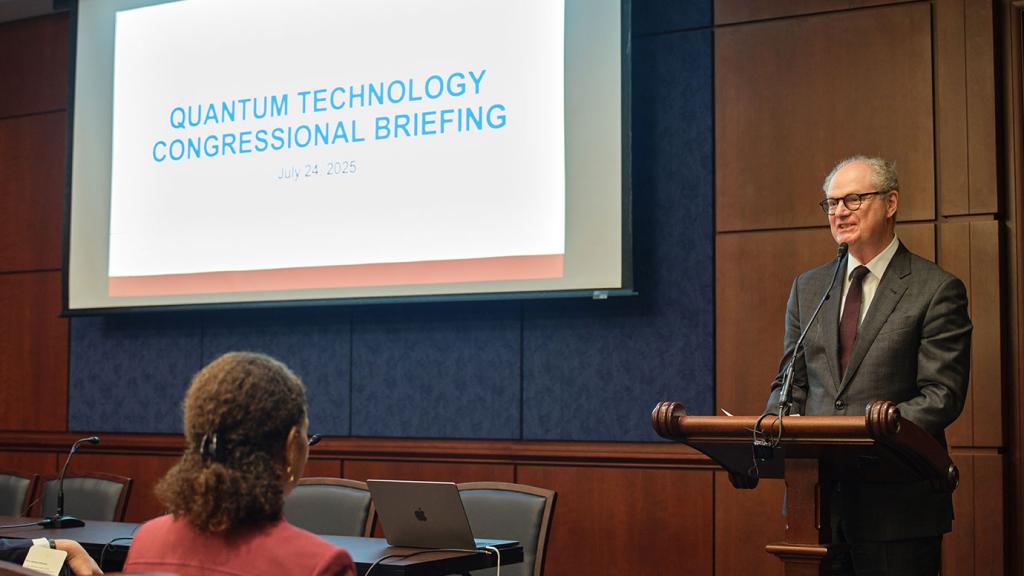Two University of Chicago innovators developing quantum technologies are among six selected for Argonne National Laboratory’s entrepreneurship program, Chain Reaction Innovations, which helps scientists launch and scale businesses based on their innovative research.
Their ideas include ways to prepare for the quantum computer revolution and better infrared sensors, which could even potentially scan for COVID-19 fevers in passersby.
“The Chain Reaction Innovations program provides two years of intense support to help scientists learn how to de-risk science-based innovations and build a business around them,” said John A. Carlisle, the program’s director. “This way, they can successfully translate their discoveries into real applications that have high societal and economic impact.”
In its fourth year, the Chain Reaction Innovations program is funded by the U.S. Department of Energy. CRI innovators have raised nearly $18 million and helped create 76 jobs as of February 2020.
Beginning in June, each innovator from the new cohort will work full-time with a host scientist at UChicago-affiliated Argonne. They also will receive support from mentors at UChicago’s Polsky Center for Entrepreneurship and Innovation and mHUB.
Closing the quantum gap

Pranav Gokhale, a graduate student in quantum computer architecture at UChicago, has developed Super.tech as an extension of the National Science Foundation’s Enabling Practical-Scale Quantum Computation (EPiQC) research project.
“Super.tech aims to close the gap between quantum hardware and quantum software, in order to realize practical applications sooner than otherwise possible,” said Gokhale, noting that current methods for controlling quantum computers must choose between accurate physics-based approaches or scalable computer science-based approaches.
“Our technology is uniquely interdisciplinary, achieving both accuracy and scalability,” he said. “Concretely, our research has already led to 5x performance gains, and we expect another 10x improvement from ongoing work.”
Speaking to Gokhale’s work, Carlisle said Super.tech “enables the development of software and hardware that we expect will have the same impact on quantum computing that Microsoft Windows had on personal computing.”
Quantum infrared

A UChicago graduate student in physical chemistry, Matthew Ackerman since 2016 has been working to increase the technology readiness level of photodetectors based on mercury telluride colloidal quantum dots.
Ackerman said the approach is in contrast to the industry’s standard processes and will drive the cost-reduction of infrared technologies: “These quantum dot inks are solution processable, which enables low-cost, scalable manufacturing and simplifies the integration of the infrared absorber with the silicon readout electronics,” he explained.
“With the support of CRI, I hope to validate the imaging capabilities of mercury telluride colloidal quantum dots in the shortwave and mid-wave infrared with potential customers,” Ackerman added, noting that support from CRI mentors will “significantly expedite these technical milestones and business development,” helping his company QDIR to attract strategic partners and future funding.
Additionally, the technology could be used to monitor groups of people to detect quickly whether someone is running a fever—making the innovation especially notable today amid the COVID-19 pandemic. “The goal would be to allow for a relaxing of the shelter-in-place policies while also protecting overall public health,” said Carlisle.
Both Gokhale and Ackerman also are 2020 George Shultz Innovation Fund finalists. The multi-million dollar venture-philanthropy fund is a perennial feature with 100% of returns reinvested to support startups across the University of Chicago, Argonne, Fermilab and Marine Biological Laboratory ecosystem.
—Adapted from a story first published on the Polsky Center website.






